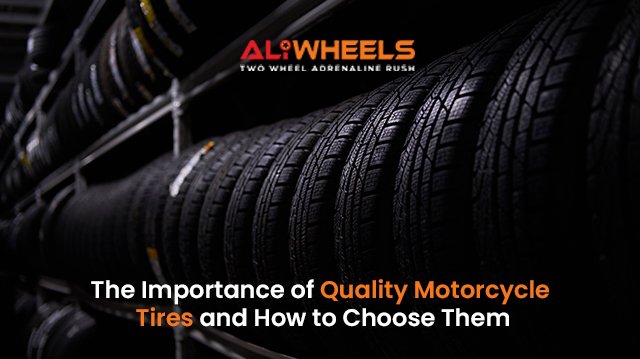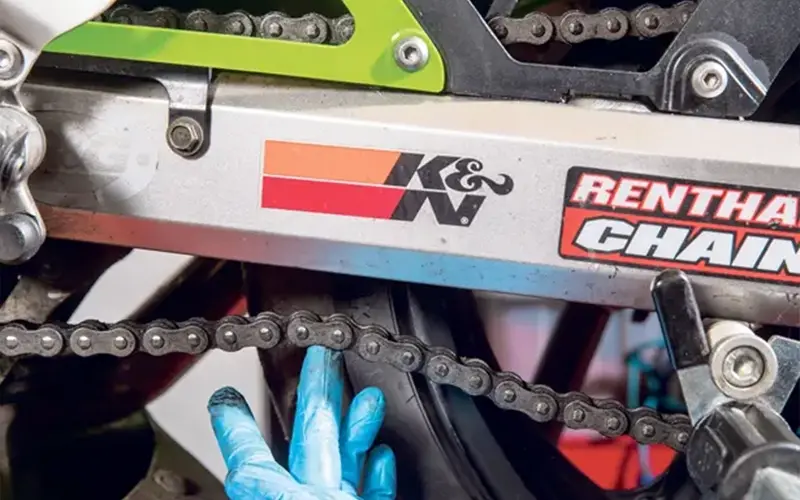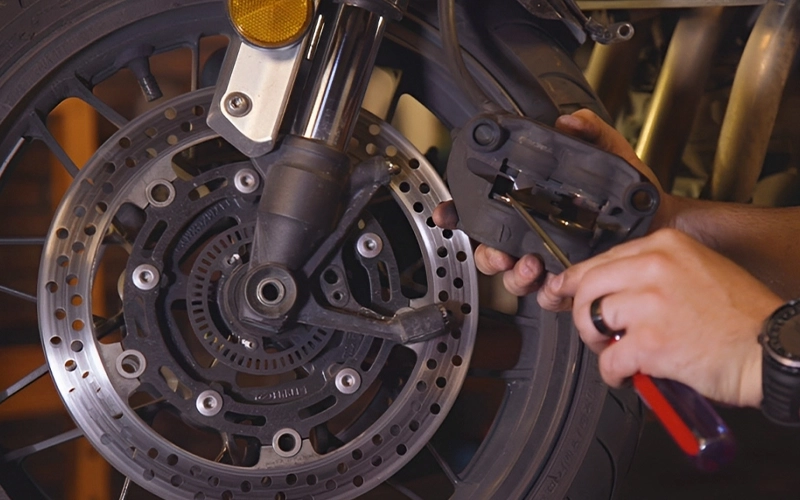To prevent your wheels from grating against the trail or road surface, motorcycle tires are more than just plain black rubber hoops. Even though the fundamental idea has stayed the same, this cutting-edge traction-providing technology gets better yearly. Tires function well because they create an air cushion between your vehicle and the ground. This cushion gives tires their shape and enables them to adapt to uneven surfaces and absorb bumps.
Functions of Motorcycle Tires
In addition to offering traction for steering, braking, and acceleration, tires also function as a suspension component. As I already mentioned, before the fork and shock start to function, the tires absorb the initial portion of the impact from bumps. Additionally, they must function effectively in various conditions, such as intense heat, freezing temperatures, and wetness.
Your safety is influenced by your choice of tires and how well you maintain your tires. Instead of buying cheap generic tires that could blow at any time, you should always invest in the proper set of tires from reputable brands for your peace of mind.
Various Motorcycle Tire Types
Radial and bias tires are the two main types of tires. Common bias and bias-belted tires fall under the bias category. The construction of bias belts is more robust. The terms “radial” and “bias” describe the configuration of the tire’s internal belts and cords. In essence, bias construction involves the belts running diagonally across the tread area. This results in different dynamic properties between radials and bias tires that significantly impact handling, wear, braking, and rolling resistance.
Bias tires are mostly found on cruisers and older motorcycles, while radial tires are more recent and are used extensively on current-model motorcycles. In general, radial tires have stiffer construction (which makes them feel more responsive) and sidewalls with a lower aspect ratio, which results in less flex. Radial tires also run cooler (leading to longer life). Bias-ply tires typically provide a softer, more forgiving ride and are slightly less expensive. Their ability to carry loads is their other key benefit. You’ll frequently find a bias rated to handle more weight in a given size.
Different types of tires are made from a variety of materials. Steel belts, which are more durable than synthetic fabric cord materials like nylon and rayon, are used to manufacture many high-end tires. Tires of different constructions or materials shouldn’t be combined on the same motorcycle because these materials have different ride and handling characteristics.
Choose Wisely as Tire Tread is a Compromise
There are numerous variations in tread patterns and designs. Choosing the right tires for your bike and riding style is crucial. Choose wisely because every tire type is a compromise. Large, knobby treads work best in loose dirt and off-road situations; they squirm a lot and wear out quickly on paved surfaces. Additionally, they need better traction on hard-paved surfaces.
Many dual sport and adventure bikes are equipped with less aggressive open tread patterns, generally better on paved surfaces, and last longer but compromise traction in loose dirt, sand, and mud. The percentage of traction on pavement compared to dirt is frequently indicated on dual-purpose tires sold with a designation like 50/50 or 90/10. Be honest about what you intend to do because making the wrong decision will make you unhappy. A DOT approval should continually be molded into the sidewall of tires used for paved surfaces.
How to Examine Motorcycle Tires
Regular tire pressure checks are advised. You should always check your tire pressure before you start riding. There are several causes for that. Checking the tire pressures at room temperature and in the cold is recommended.
In addition, there is an obvious safety factor. If a tire picks up a nail or is losing pressure, it could cause a collision while driving to the gas station to check your tires. We advise you to locate a location for a tire air pressure gauge on your motorcycle (or, if there isn’t one, carry one in your pocket). Purchase a high-quality gauge; cheap ones are frequently unreliable.
Consult the owner’s manual for the motorcycle to find the suggested tire pressure. Not only do many models have different specifications for the front and back, but they also differ for low- and high-speed operation, light (solo), heavy loads, and passengers. Unless the motorcycle is fully loaded, please do not use the sidewall pressure indicated on the tire because it is the maximum pressure.
How to Replace Motorcycle Tires
Tires eventually degrade and need to be replaced. As the center wears away more quickly than the shoulders, the rear tires typically square up and lose their rounded profile. Although the tread on front tires tends to wear more uniformly, cupping, or scalloped wear, can start to appear. As the knobs wear, tear, or break off over time, the knobby tires become more noticeable.
Check that the tread on your tires is deep enough. The tire is dangerously worn and needs to be replaced as soon as the built-in 1/32-inched indicators or tire cord are exposed. Check tires for uneven wear as well. A problem with the tire or bike may be indicated by its wear-down on one side. For assistance, speak with a mechanic or local dealer. Examine your rims as well. Rims that are cracked or bent need to be replaced.
Planning and having new tires ready to install before the old ones are completely worn out is a good habit. Use a wheel rim protector to ensure that no marks are left on the rim while taking the tire off. A wheel balancing device can help in balancing the wheel so you don’t lose air pressure with time. On tube types, tubes should be changed at the same time as the tires. Every time a tire is changed, a new tube should be installed because worn-out tubes are vulnerable to cracking and deterioration, which can result in unexpected failure. If a tube is used, confirm that it is the appropriate size and, if necessary, compatible with radials. If the rim strips appear to have deteriorated, they should be replaced.
A tubeless tire repair kit can be used to fix a puncher on the go for tubeless tires.
You can see that tires are more than just rubber loops. They link your motorcycle and the road and determine whether your riding day will be one you will always remember. Ensure proper tire maintenance, select your tire styles carefully, and don’t skimp on them. Usually, you get what you pay for. For the best motorcycle parts and tire-related accessories check out aliwheels.com.
With more than 10,000 products and counting aliwheels give you the best quality motorcycle parts at affordable rates with free shipping.










